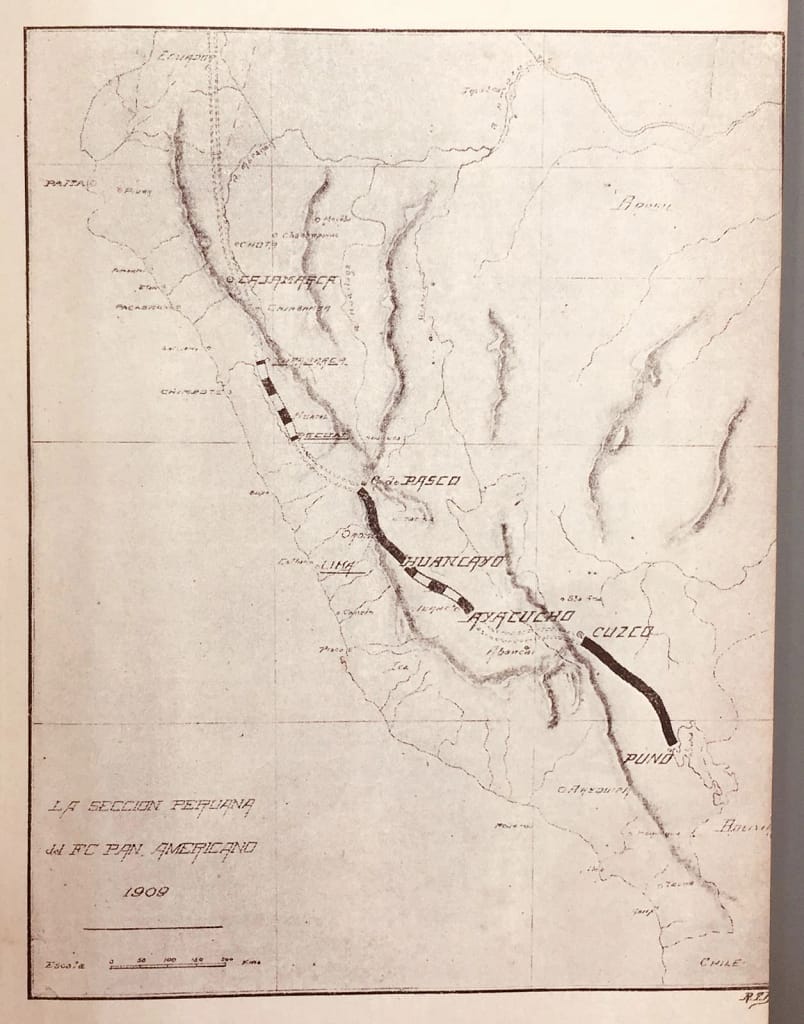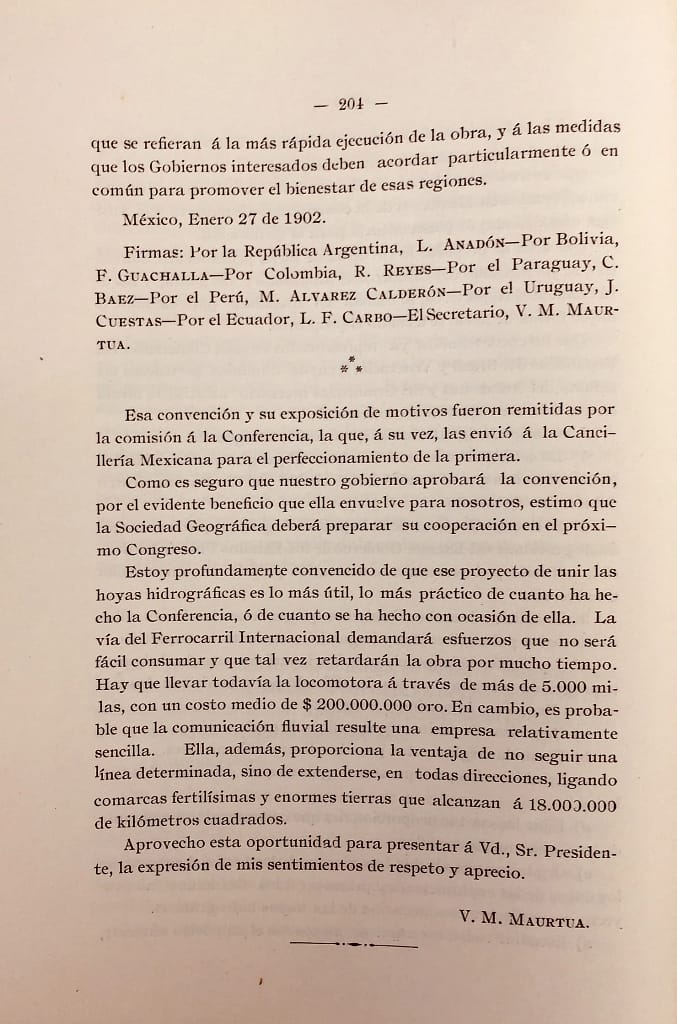1909. The Peruvian section of the Pan-American railroad. At a time when automobiles were still not as ubiquitous as today (Peru’s first imported car arrived to the port of Callao just in 1904), railroads were the quintessential means for producing the absolute space desired by the increasingly positivist technical and bureaucratic elites of South America.

1902. The positivist dream of connecting the main river basins of South America: the Amazon, La Plata, Orinoco. “I am deeply convinced that the project of bringing together these hydrographic networks is the most useful and most practical affaire carried out in the Conference. The route of the International Railroad will demand investments that perhaps will not materialize in a long time. (…) Instead, fluvial communication will probably still be a relatively simple affaire in the years to come. It also provides the advantage of not following a predetermined line, but of extending itself in all directions, thus connecting fertile shires and vast lands that reach over 18,000,000 square kilometers.”

Which kinds of empty homogeneous timespaces were cultivated through the crafting international plans?
What would it had meant to bring discontinuous river networks in direct connection with each other?
Which kind of rupture did this mean in relation the old trade networks that always brought together these river networks?